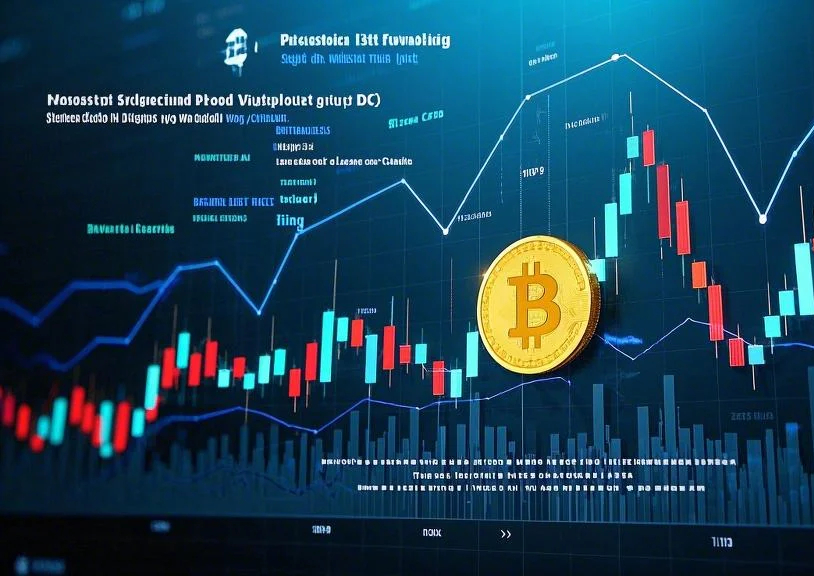Decentralized finance, or DeFi, has emerged as one of the most transformative innovations in the cryptocurrency space. By leveraging blockchain technology, DeFi aims to recreate traditional financial systems—such as lending, borrowing, and trading—without the need for intermediaries like banks or brokers. This guide will explore what DeFi is, how it works, and why it’s revolutionizing the financial industry. We’ll also discuss key components of DeFi, such as crypto staking, and how platforms like Ethereum 2.0 are driving its growth.
What is Decentralized Finance (DeFi)?
Decentralized finance refers to a system of financial applications built on blockchain networks, primarily Ethereum. Unlike traditional finance, which relies on centralized institutions to facilitate transactions and manage assets, DeFi operates on open, permissionless networks that anyone can access. This decentralization eliminates the need for intermediaries, reducing costs, increasing transparency, and empowering users to have full control over their funds.
DeFi applications, often called dApps (decentralized applications), use smart contracts—self-executing contracts with the terms of the agreement directly written into code. These smart contracts automate processes like lending, borrowing, and trading, ensuring that transactions are secure, transparent, and tamper-proof. The DeFi ecosystem includes a wide range of services, from decentralized exchanges (DEXs) and lending platforms to yield farming and insurance protocols. By removing intermediaries, DeFi democratizes access to financial services, making them available to anyone with an internet connection.
How Does DeFi Work?
At its core, DeFi relies on blockchain technology to create a trustless and transparent financial system. Here’s a breakdown of how it works:
Blockchain and Smart Contracts
DeFi applications are built on blockchain networks, with Ethereum being the most popular platform due to its robust smart contract functionality. Smart contracts are programmable agreements that automatically execute when predefined conditions are met. For example, a lending platform might use a smart contract to release funds to a borrower once collateral is deposited. This automation eliminates the need for intermediaries and ensures that transactions are executed exactly as programmed.
Decentralized Exchanges (DEXs)
Decentralized exchanges are a cornerstone of the DeFi ecosystem. Unlike traditional exchanges, which rely on a central authority to facilitate trades, DEXs operate on blockchain networks and use smart contracts to enable peer-to-peer trading. Popular DEXs like Uniswap and SushiSwap allow users to trade cryptocurrencies directly from their wallets, providing greater security and control over their assets. DEXs also support liquidity pools, where users can deposit their tokens to earn trading fees and rewards.

Lending and Borrowing
DeFi lending platforms, such as Aave and Compound, allow users to lend their cryptocurrencies and earn interest or borrow assets by providing collateral. These platforms use smart contracts to automate the lending process, ensuring that loans are secured and interest rates are determined algorithmically. Borrowers can access funds without undergoing credit checks, making DeFi lending more inclusive than traditional banking systems. However, borrowers must provide collateral, which is often higher than the loan amount, to mitigate the risk of default.
Key Components of DeFi
The DeFi ecosystem is built on several key components that work together to create a decentralized financial system. Here are some of the most important elements:
Crypto Staking
Crypto staking is a process where users lock up their cryptocurrencies to support the operations of a blockchain network, such as validating transactions or securing the network. In return, stakers earn rewards, typically in the form of additional tokens. Staking is a fundamental part of proof-of-stake (PoS) blockchains, which are more energy-efficient than proof-of-work (PoW) systems. Ethereum’s transition to Ethereum 2.0, which uses a PoS consensus mechanism, has significantly boosted the popularity of staking in the DeFi space.
Yield Farming
Yield farming is a popular DeFi strategy where users provide liquidity to decentralized platforms in exchange for rewards. For example, users can deposit their tokens into a liquidity pool on a DEX and earn a share of the trading fees generated by the platform. Some platforms also offer additional incentives, such as governance tokens, to attract liquidity. While yield farming can be highly profitable, it also carries risks, such as impermanent loss and smart contract vulnerabilities.
Stablecoins
Stablecoins are cryptocurrencies designed to maintain a stable value by pegging their price to a reserve asset, such as the US dollar. They play a crucial role in the DeFi ecosystem by providing a stable medium of exchange and store of value. Popular stablecoins like USDT (Tether) and USDC (USD Coin) are widely used in DeFi applications for trading, lending, and borrowing. Stablecoins also enable users to hedge against the volatility of other cryptocurrencies.
The Role of Ethereum 2.0 in DeFi
Ethereum has been the backbone of the DeFi ecosystem, hosting the majority of DeFi applications and smart contracts. However, the network has faced challenges, such as high gas fees and scalability issues, which have limited its growth. The transition to Ethereum 2.0 aims to address these challenges by introducing a proof-of-stake (PoS) consensus mechanism and sharding, which will improve scalability and reduce transaction costs.
Ethereum 2.0’s PoS system allows users to stake their ETH and earn rewards, making it more energy-efficient and accessible than the current proof-of-work (PoW) system. This transition is expected to enhance the performance of DeFi applications, making them faster, cheaper, and more user-friendly. As Ethereum 2.0 rolls out, it will likely drive further innovation and adoption in the DeFi space.
Risks and Challenges in DeFi
While DeFi offers exciting opportunities, it also comes with significant risks and challenges. Here are some of the key concerns:
Smart Contract Vulnerabilities
DeFi applications rely on smart contracts, which are susceptible to bugs and vulnerabilities. Exploits of these vulnerabilities can lead to significant financial losses, as seen in several high-profile hacks. It’s essential to use platforms that have undergone rigorous security audits and to diversify your investments to mitigate risk.
Regulatory Uncertainty
The regulatory environment for DeFi is still evolving, and changes in regulations could impact the growth and operation of DeFi platforms. Some governments may impose restrictions or require compliance with anti-money laundering (AML) and know-your-customer (KYC) regulations, which could affect the decentralized nature of DeFi.
Market Volatility
DeFi platforms often involve cryptocurrencies, which are highly volatile. Price fluctuations can impact the value of collateral, leading to liquidations or losses. It’s important to understand the risks and use risk management strategies, such as setting stop-loss orders and diversifying your portfolio.
Final Thoughts
Decentralized finance is revolutionizing the financial industry by providing open, transparent, and accessible financial services to anyone with an internet connection. By leveraging blockchain technology and smart contracts, DeFi eliminates intermediaries and empowers users to take control of their finances. Whether you’re interested in lending, borrowing, trading, or earning rewards through crypto staking, DeFi offers a wide range of opportunities.
However, it’s important to approach DeFi with caution and conduct thorough research before participating. Understanding the risks, staying informed about market trends, and using secure platforms are key to navigating the DeFi space successfully. As the ecosystem continues to evolve, driven by innovations like Ethereum 2.0, DeFi has the potential to reshape the future of finance and create a more inclusive financial system for all.
